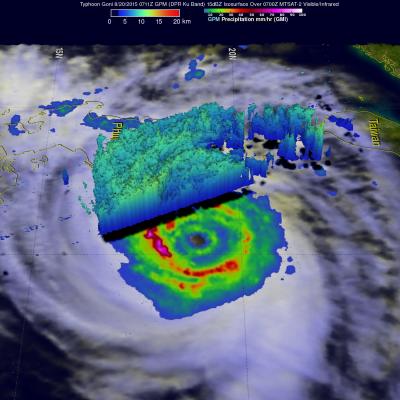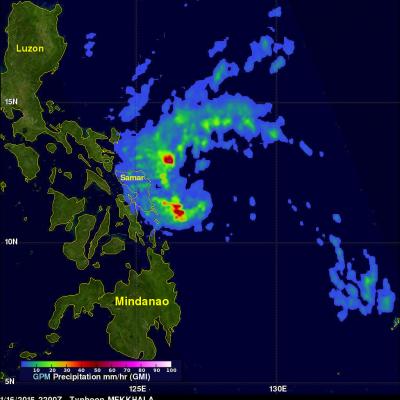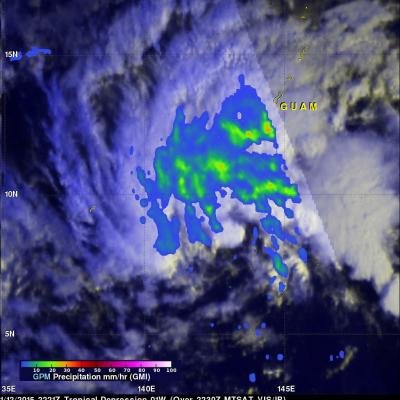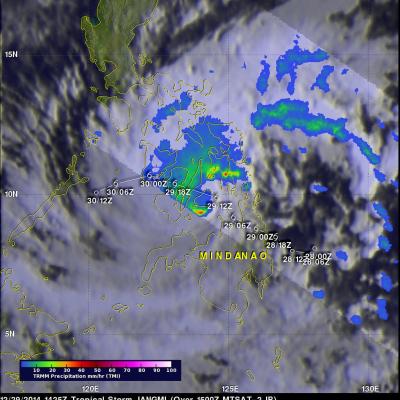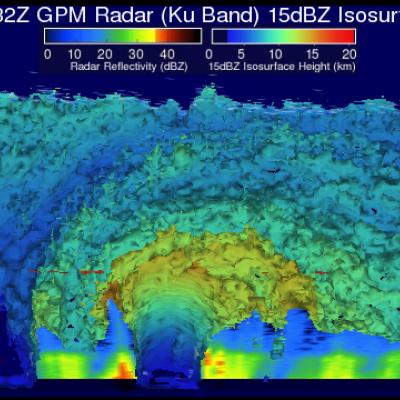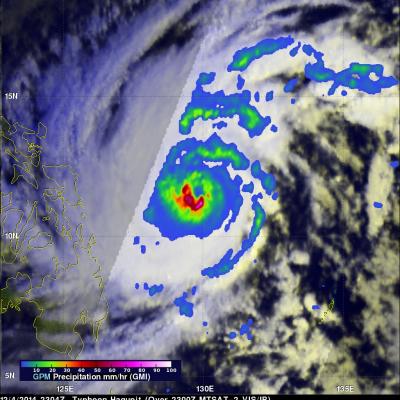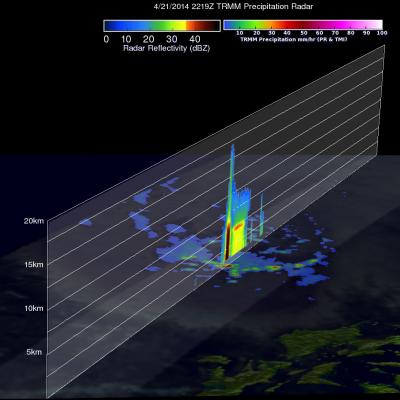Powerful Typhoon Goni Brushing The Philippines
Rain bands from typhoon Goni were hitting the island of Luzon in the northern Philippines when the GPM core observatory satellite flew over on August 20, 2015 at 0711 UTC (3:11 PM Philippine Standard Time). GPM's Microwave Imager (GMI) clearly showed the intensity of rain falling in Goni's inner and replacement outer eye wall. GMI found that precipitation was falling at a rate of over 88.0 (3.5 inches) in extreme rainfall south of Goni's distinct eye. Radar reflectivity data from GPM's Dual-Frequency Precipitation Radar (DPR) instrument was used in this view (from the east) to show the 3-D


